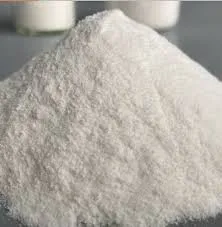
loka . 09, 2024 01:28 Back to list
hpmc grades and uses
HPMC Grades and Their Uses
Hydroxypropyl Methylcellulose (HPMC) is a versatile semi-synthetic polymer derived from cellulose, and it is widely used in various industries due to its unique properties. HPMC is known for its excellent water retention, thickening, and film-forming capabilities. It is a popular choice in pharmaceuticals, food, construction, and cosmetics. Understanding the different grades of HPMC and their specific applications is essential for industries to achieve the desired results in their products.
HPMC Grades
HPMC comes in various grades, each modified for specific functionalities. The primary differences between these grades are the degree of substitution, viscosity, and/or molecular weight, which significantly affect their physical and chemical properties. Common grades include HPMC E, HPMC K, HPMC F, and HPMC M.
1. HPMC E Grades HPMC E grades typically have a low viscosity and are primarily used as a thickener, binder, and film-forming agent. Due to their solubility in cold and hot water, they are often favored in pharmaceutical formulations, particularly for tablet coating and controlled release applications. The E grade also finds use in food products, such as sauces and dressings, providing a smooth and stable texture.
2. HPMC K Grades K grades exhibit higher viscosity levels and are used extensively in the construction industry. They offer excellent water retention properties in cement-based products, ensuring proper workability and reducing the risk of cracking during the curing process. HPMC K grades enhance the strength and durability of mortars and plasters, making them indispensable in tile adhesives and grouts.
3. HPMC F Grades F grades are designed for high-performance applications, particularly where viscosity is critical. They are often employed in the pharmaceutical and food industries, providing stability and consistency in final products. These grades are crucial for making emulsions and suspensions, as they help to maintain uniformity and prevent separation.
4. HPMC M Grades M grades are noted for their balanced properties between viscosity and ease of handling. They are commonly used as thickeners in cosmetics and personal care products, where they help to stabilize formulations and improve the sensory profile of creams and lotions.
hpmc grades and uses

Applications in Various Industries
The multifaceted nature of HPMC makes it a popular choice across different sectors. In pharmaceuticals, it serves not only as an excipient in tablet formulations but also as a gelling agent in controlled-release systems. Its non-toxic and biodegradable characteristics make HPMC a suitable option for applications requiring patient safety, such as drug delivery systems and surgical lubricants.
In the food industry, HPMC is used as a food additive and thickening agent. It enhances the texture of various products, including dairy products, sauces, and dressings, ensuring good mouthfeel and stability. Additionally, it is employed in gluten-free baking to mimic the structural properties of gluten, providing elasticity and moisture retention.
The construction industry benefits from HPMC's water retention and emulsification properties, which are crucial for ensuring the longevity and effectiveness of building materials. Moreover, its capability to improve adhesion and flexibility allows for more robust construction solutions, enhancing overall longevity and reliability.
In cosmetics, HPMC helps in formulating creams, lotions, and gels, imparting a smooth texture while maintaining stability over time. Its film-forming properties contribute to the development of high-performance cosmetic products, making them more effective and desirable to consumers.
Conclusion
In summary, the diverse grades of Hydroxypropyl Methylcellulose (HPMC) are integral to numerous industries, providing various functionalities from thickening to film formation. Understanding the properties and applications of each grade allows manufacturers to optimize their products, ensuring quality and performance. HPMC's unique characteristics make it a vital ingredient in pharmaceuticals, food, construction, and cosmetics, showcasing its importance in modern industrial applications.
-
The Widespread Application of Redispersible Powder in Construction and Building Materials
NewsMay.16,2025
-
The Widespread Application of Hpmc in the Detergent Industry
NewsMay.16,2025
-
The Main Applications of Hydroxyethyl Cellulose in Paints and Coatings
NewsMay.16,2025
-
Mortar Bonding Agent: the Key to Enhancing the Adhesion Between New and Old Mortar Layers and Between Mortar and Different Substrates
NewsMay.16,2025
-
HPMC: Application as a thickener and excipient
NewsMay.16,2025
-
Hec Cellulose Cellulose: Multi functional dispersants and high-efficiency thickeners
NewsMay.16,2025







